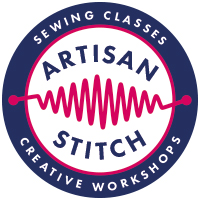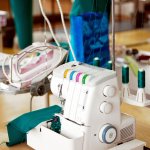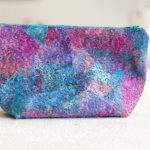What is ‘Pattern Ease’ and why do I need it?
Pattern Ease is the allowance made over and above the body measurements when making a pattern. It enables natural body movement. If patterns were exactly the same size as your body measurement, the garment would literally be skin tight. Pattern ease is added to the body circumference measurements, but not to any vertical measurements. Although your shop-bought clothes may say ‘to fit bust 36″‘, if you measure them, you’ll find that they are considerable bigger.
There are three basic kinds of pattern ease:
(1) Wearing ease
(2) Design ease
(3) Negative ease
Wearing or fitting ease
The minimum amount added to enable comfortable movement and sitting. This is usually no less than 5cm (2″).
Design ease
The extra amount added to create a particular shape or silhouette.
Negative ease
Applies to garments made from stretchy fabric such as jersey or lycra. It is a deduction from the actual body measurement so the resulting pattern is smaller than the wearer’s measurements. The garment will therefore stretch to fit and be tightly-fitting. Negative ease applies to sportswear, swimwear and underwear.
Guide to the amount of Fitting and Design Ease
The average total amount added to body measurements to allow for wearing and design ease is as follows:
Close fit 9cm
Easy Fit 13cm
Loose fit 17cm
Baggy 21cm
Oversize 25cm
How do I know how much ease has been added?
Paper Pattern manufacturers don’t make it easy to know how much ease has been added. Sometimes the garment might be described as ‘Easy fitting’ or ‘Loose fitting’. But each manufacturer will have their own idea of what those words mean. Just as they all have their own set of sizes! They usually won’t tell you on the pattern envelope how much ease has been included but they may tell you the finished garment measurements. If it’s not on the envelope, look at the pattern pieces themselves. Generally upper body garments such as blouses will show the finished bust size, whilst skirts and trousers may show the finished hip measurement. For example, the hip measure of an A-line skirt in size 14 will actually be 110cm, although the pattern envelope suggests it’s to fit a size 97cm hip.
Another very general indication will be the nature of the garment. Underwear or tops worn close to the body will have less design ease, and an overgarment such as a coat will have much more design ease included to enable it to fit over several other layers of clothing.
The design itself should tell you whether the item is supposed to be close-fitting or baggy. So if you’re making a cocoon dress, don’t skimp on that ease, or it will be a sheath dress instead!
To learn more about pattern ease, why not take a dressmaking course?








